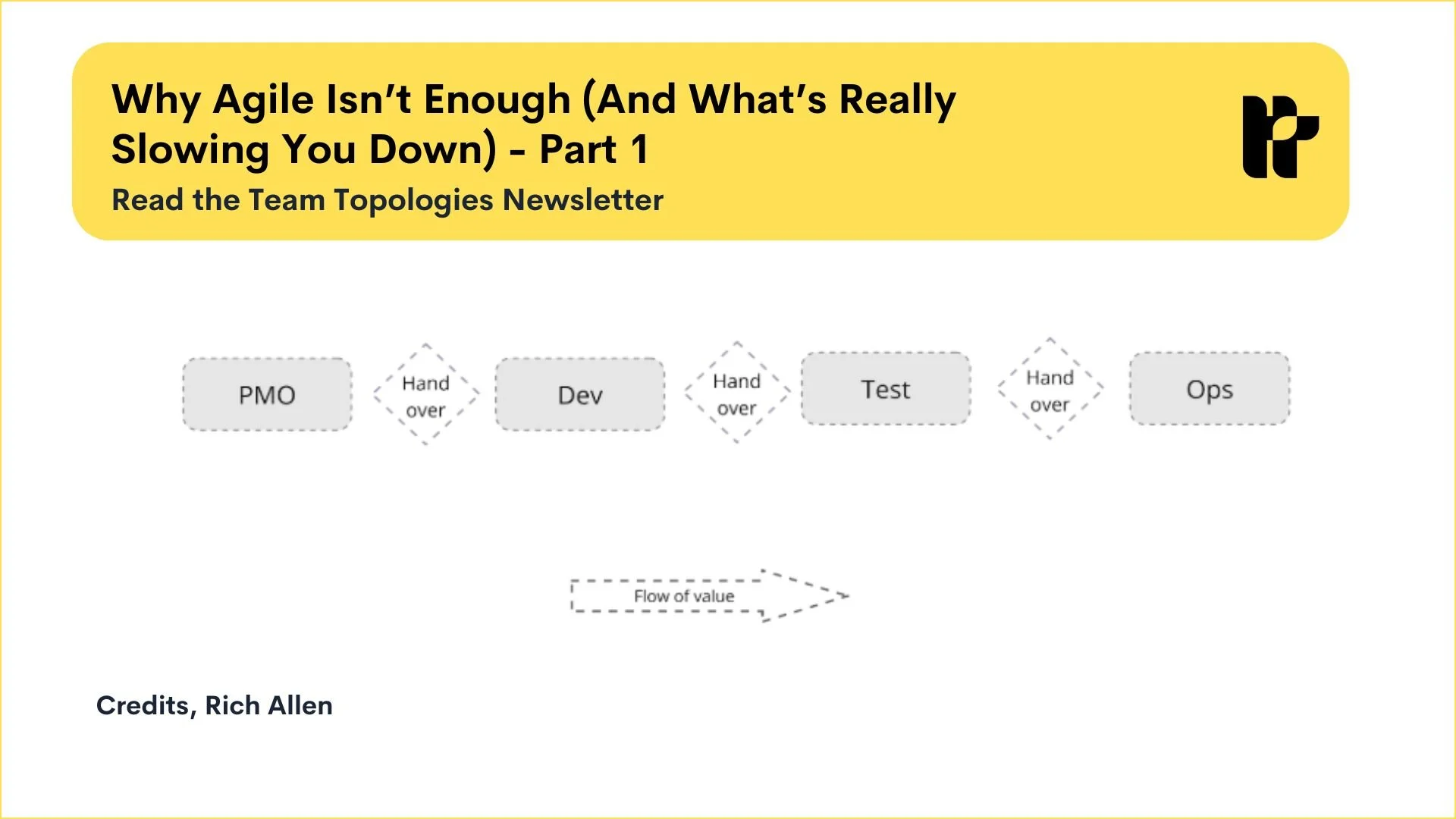Newsletter (march 2025): X-as-a-Service (Xaas): effective self-service non-blocking dependencies
This edition was curated by Eduardo da Silva
In our last newsletter, we explored effective team collaboration. Now, we’re shifting our focus to X-as-a-Service (XaaS), which shouldn’t be seen as a one-time solution but as an ongoing process that continuously proves its value.
The ability to scale effectively while maintaining speed and quality often seems like an impossible triangle to square. As organizations and their teams grow, direct communication and dependencies tend to emerge and become increasingly complex and time-consuming. This impacts the ability of the organization to achieve “fast flow of value”.
The X-as-a-Service (XaaS) interaction mode from Team Topologies offers a fundamental pattern to help organizations avoid the trap of creating unnecessary “blocking dependencies” between their teams. This is essential to support organizations to scale while achieving a fast flow of value.
As we can see in the following diagram, when organizations have undefined interactions and have handovers in the way to create value for their customers, things take a long time to happen (long and complex “value stream maps” and “slow flow of value”). However, when we start aligning teams to clear streams of value and allow teams to leverage platform capabilities in a self-service manner (via XaaS interaction mode), we create conditions for each team to achieve a fast flow of value.
In a nutshell, and as the name says, XaaS allows teams (typically stream-aligned teams) to consume capabilities from other (platform) teams in a self-service manner, without the overhead of constant coordination (meetings, aligning on release plans, etc.). The essential idea of this interaction is “self-service”, i.e., the consuming teams can use the provider team’s capabilities via an API, self-servicing documentation, etc.
It is important to highlight that effective XaaS isn't just about creating APIs or platforms – it's about fundamentally changing how teams understand the needs of the teams they will be serving. This is fundamental to provide effective self-service capabilities, clear service-level expectations, and well-defined interfaces - which when done right, help reduce the necessary cognitive load of the consuming team when trying to get the value of offered service. Learn more about XaaS prerequisites.
Platforms ❤️ XaaS - Platforms should strive for effective XaaS
New Zealand's largest marketplace and classifieds site, Trade Me, adopted the Thinnest Viable Platform (TVP) approach to streamline interactions between platform and stream-aligned teams. The majority of these interactions occur through "X-as-a-Service", allowing teams to access necessary services without the need for direct collaboration, thus reducing dependencies and enhancing scalability.
The success of X-as-a-Service mode hinges on treating internal platforms and services as products. This means focusing on user experience, maintaining clear documentation, providing reliable support channels, and continuously evolving the service based on user feedback. Platform teams must think like product teams, considering their consumers as customers and designing intuitive and self-service services. To achieve this, service providers should continuously understand the needs of their users. If, for some reason, the XaaS is not anymore properly satisfying and supporting its users, then it is essential that platforms understand - typically by leveraging collaboration- what changes may be needed to address the challenges at hand, as visualized in the following diagram. For example, it may be the case that the teams now require a new version of a certain platform or an updated compliance check needs to be added to the platform. This highlights the importance of leveraging collaboration as a way to evolve XaaS interactions effectively.
First, collaboration between the Platform and two stream-aligned teams has been pioneering a new capability that is beneficial for them and could help other teams within the organization. This capability is shaped by the needs of the stream-aligned teams; however, it is not necessarily their core business and can be integrated into a platform that supports both them and other teams.
What are you trying to achieve?
Some readers may be here to learn more about Team Topologies, while others are already tackling specific challenges. We're working to refine our newsletter, enhance our content, and shape the second edition of our book. Your feedback will play a crucial role in guiding these efforts!
What’s Coming Up Next?
We are gathering all Team Topologies events on our Events page and would love to hear your feedback about the ones you have attended or the ones that we have missed
LIVE in Leeds, Mar 19 Yorkshire DevOps 2025 - Platform Engineering done well: innovation, efficiency, market advantage with Matthew Skelton (keynote)
ONLINE, Mar 19 Team Topologies, tu equipo no es el problema… ¡Es cómo lo organizas! with Aleix Morgadas (event)
LIVE in Netherlands, Mar 27 Fast Flow Conf NL 2025 - Everything about Team Topologies (talks)
LIVE in Berlin, Apr 3-4 - Agile Meets Architecture (talks)
LIVE in London, Apr 10, QCon London - Success Patterns for Fast Flow and Team Topologies with Matthew Skelton and Val Yonchev (masterclass)
LIVE in Denver, Apr 14-15 Explore DDD Denver 2025 - Success patterns for fast flow and Team Topologies masterclass
LIVE in Oslo, Apr 24 Exclusive Roundtable on Product Organization with Manuel Pais (roundtable)
ONLINE, Apr 29 Team Topologies: Build High-Performing Teams for Sustainable Success with GetNextIT (webinar)
Have we missed an event around Team Topologies? Let us know.
Welcome Team Topologies Advocates
We are proud to have three new Team Topologies Advocates:
If you're passionate about Team Topologies and want to become an advocate, we would love to have you join us. Or, if you have a story to share, we would be honored to feature it on the website.
Was this newsletter useful? Please share your thoughts on how we can make it better. Send us an email.













